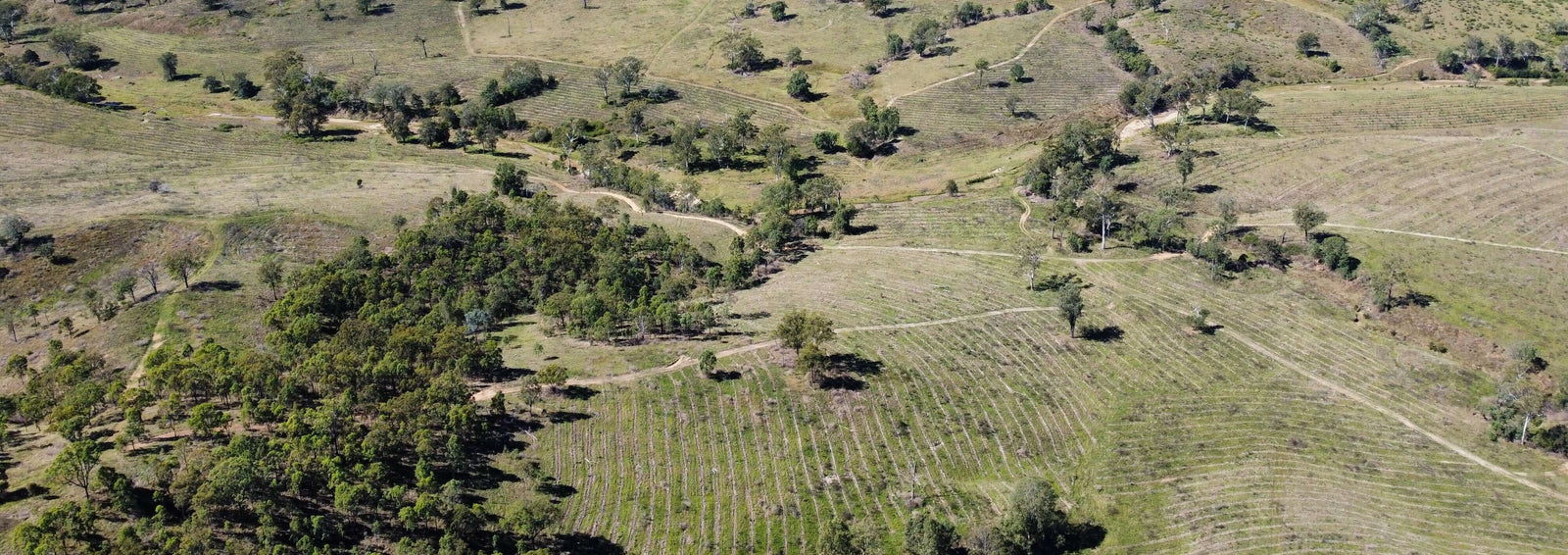Located north-west of Brisbane on the lands of the Yuggera people, this 259-hectare property is being restored by Greenfleet. Ivory Creek is made up of four adjoining properties - Ivory Flat, Browns Road, Cherry Avon and Avonvale. We began revegetating this project in 2022 with the restoration of the riparian and floodplain ecosystems and work will continue into 2025.
This project will deliver significant climate action and the native restoration along Ivory Creek will improve water quality and reduce erosion in this section of the Brisbane River catchment. With existing koalas confirmed on some of these properties, it will also extend habitat for the endangered species.
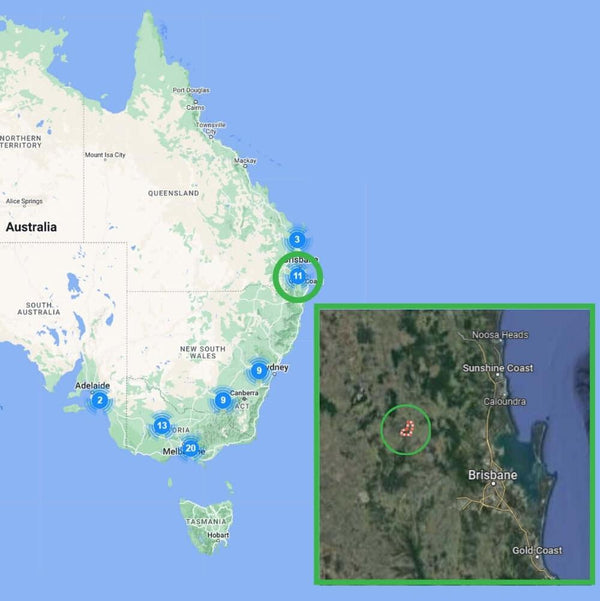
Location & Map
The four properties that make up Ivory Creek are located North-West of Brisbane. The ecosystems that occurred in this area prior to land clearing include some that are endangered. Greenfleet’s revegetation of these regional ecosystems will help bolster them through the rest of this century.
Ivory Creek is one of many Greenfleet projects delivering climate action through native reforestation in the South-East Queensland region. To see where some of our other native forests are growing, click here.
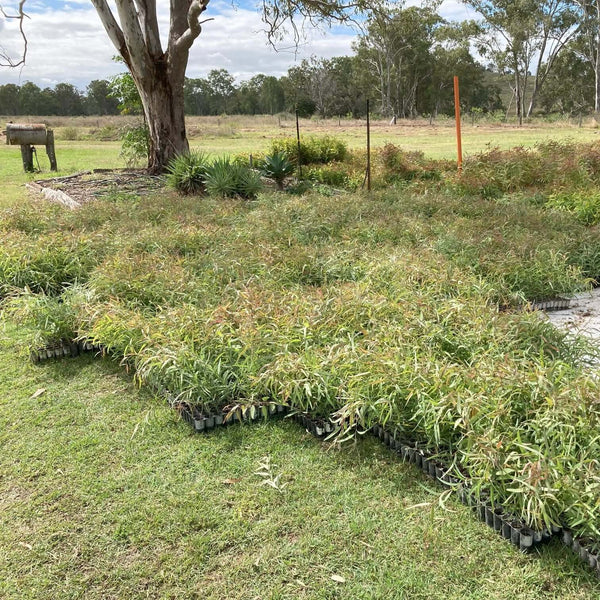
Species Selection & Revegetation Approach
In total, 25 different locally native plant species have been restored at Ivory Creek. This includes species that will restore and bolster the ecosystem types and create a resilient native forest.
These species include Australian blackwood (Acacia melanoxylon), Moreton Bay ash (Corymbia tessallaris), and sandpaper fig (Ficus opposita). This species is a fruiting plant that provides habitat and food sources for birds and insects, including the Purple Moonbeam butterfly.
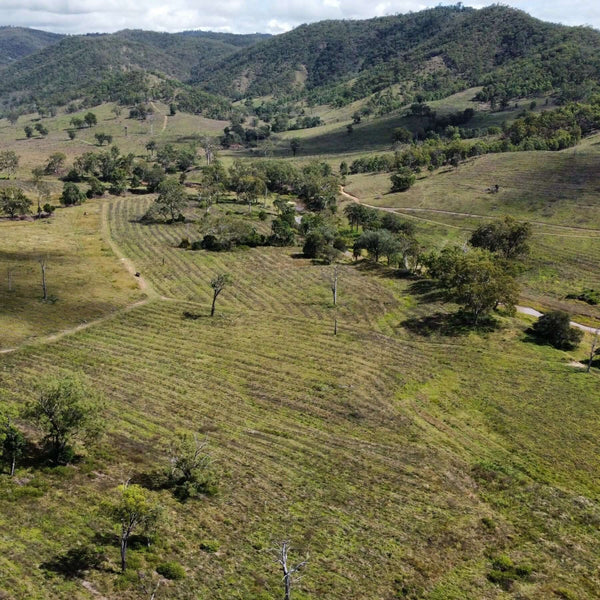
Wildlife Habitat Restoration
There are already known populations of koalas in parts of the properties that form the Ivory Creek project. With this species classified as endangered in Queensland, New South Wales, and the ACT, work to restore and protect their habitat is vital.
Species such as forest red gum (Eucalyptus tereticornis) planted at Ivory Creek is a key koala habitat and food tree. By including this in the revegetation, we will extend and create habitat for these iconic animals.
Other wildlife that may benefit from the restoration work occurring at Ivory Creek include the grey-headed flying fox; a species that is classified as vulnerable due to land clearing. For their diet and habitat, grey-headed flying foxes utilise flowering eucalypt species such as the gum topped box (Eucalyptus moluccana). They also play an important role in ecosystems as they move seed and pollen through the forest to help it develop and regenerate.
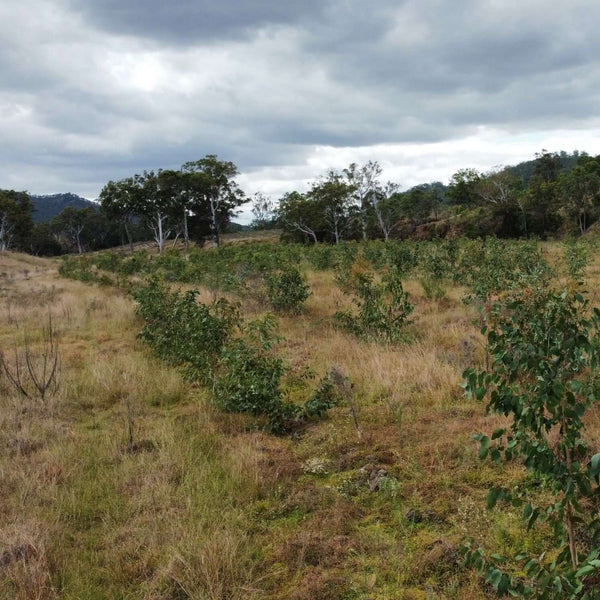
Climate Action
The forest growing at Ivory Creek is legally protected for up to 100 years. Over that time, it will capture over 167,000 tonnes of carbon from the atmosphere which is the equivalent to removing 1,200 average vehicles from Australia’s roads for a whole year.
Greenfleet uses the Full Carbon Accounting Model (FullCAM) to measure the carbon uptake at our revegetation sites. This model was developed by the CSIRO and is approved by the Department of Climate Change, Energy, the Environment and Water.
Location
259 hectares north-west of Brisbane, Queensland.
Planting Dates
2022, 2023
Species Planted
- Acacia disparrima
- Acacia maidenii
- Acacia melanoxylon
- Acacia salicina
- Allocasuarina torulosa
- Alphitonia excelsa
- Angophora subvelutina
- Brachychiton populneus
- Casuarina cunninghamiana
- Corymbia intermedia
- Corymbia tessellaris
- Eucalyptus acmenoides
- Eucalyptus crebra
- Eucalyptus melanophloia
- Eucalyptus moluccana
- Eucalyptus propinqua
- Eucalyptus siderophloia
- Eucalyptus sideroxylon
- Eucalyptus tereticornis
- Ficus opposita
- Lophostemon confertus
- Lophostemon suaveolens
- Melaleuca bracteata
- Melaleuca viminalis
- Melia azedarach


